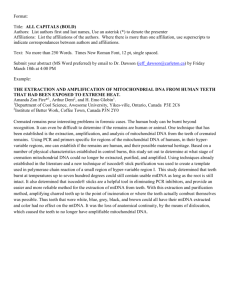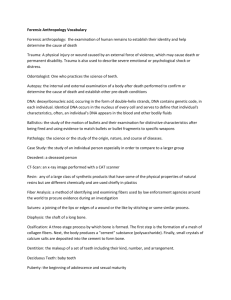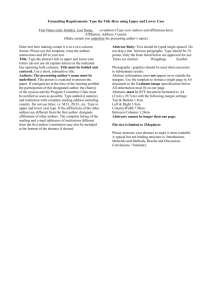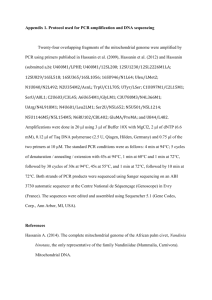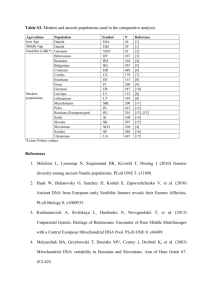Template
advertisement
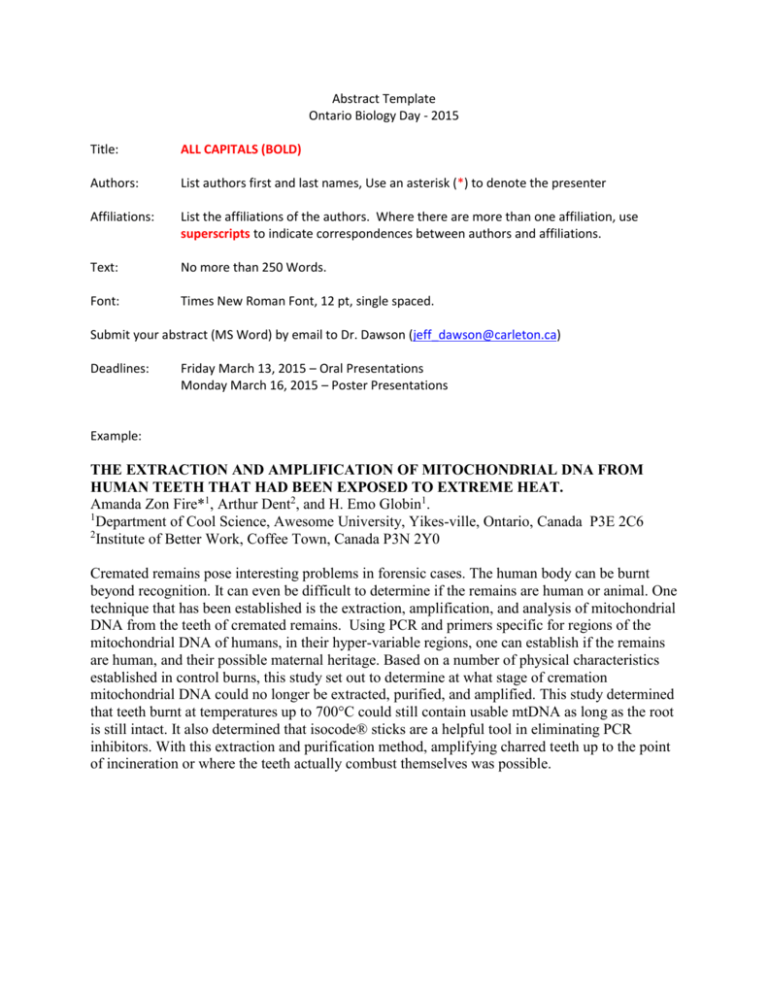
Abstract Template Ontario Biology Day - 2015 Title: ALL CAPITALS (BOLD) Authors: List authors first and last names, Use an asterisk (*) to denote the presenter Affiliations: List the affiliations of the authors. Where there are more than one affiliation, use superscripts to indicate correspondences between authors and affiliations. Text: No more than 250 Words. Font: Times New Roman Font, 12 pt, single spaced. Submit your abstract (MS Word) by email to Dr. Dawson (jeff_dawson@carleton.ca) Deadlines: Friday March 13, 2015 – Oral Presentations Monday March 16, 2015 – Poster Presentations Example: THE EXTRACTION AND AMPLIFICATION OF MITOCHONDRIAL DNA FROM HUMAN TEETH THAT HAD BEEN EXPOSED TO EXTREME HEAT. Amanda Zon Fire*1, Arthur Dent2, and H. Emo Globin1. 1 Department of Cool Science, Awesome University, Yikes-ville, Ontario, Canada P3E 2C6 2 Institute of Better Work, Coffee Town, Canada P3N 2Y0 Cremated remains pose interesting problems in forensic cases. The human body can be burnt beyond recognition. It can even be difficult to determine if the remains are human or animal. One technique that has been established is the extraction, amplification, and analysis of mitochondrial DNA from the teeth of cremated remains. Using PCR and primers specific for regions of the mitochondrial DNA of humans, in their hyper-variable regions, one can establish if the remains are human, and their possible maternal heritage. Based on a number of physical characteristics established in control burns, this study set out to determine at what stage of cremation mitochondrial DNA could no longer be extracted, purified, and amplified. This study determined that teeth burnt at temperatures up to 700°C could still contain usable mtDNA as long as the root is still intact. It also determined that isocode® sticks are a helpful tool in eliminating PCR inhibitors. With this extraction and purification method, amplifying charred teeth up to the point of incineration or where the teeth actually combust themselves was possible.
